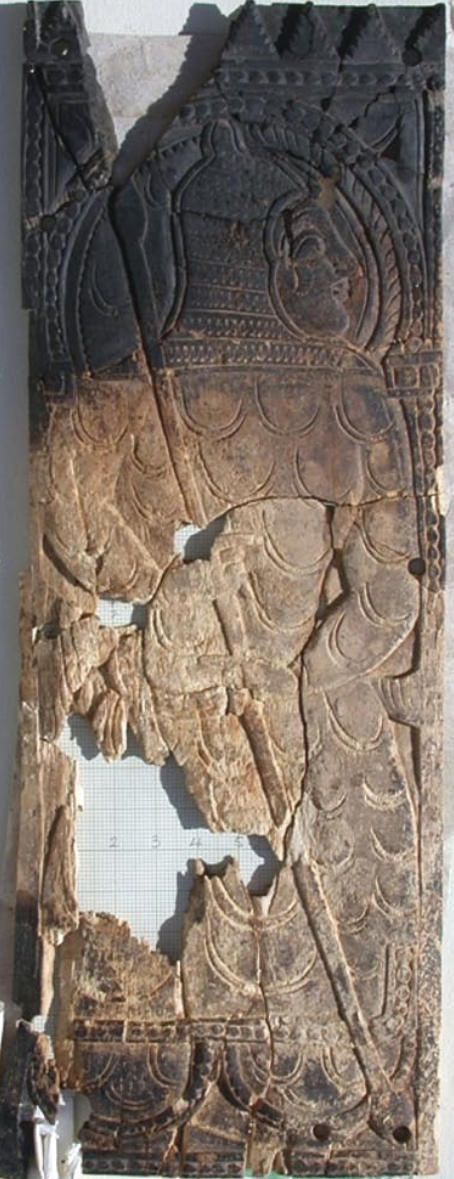
Register a SNAP EBT card with Amazon
Umayyad or Abbasid Ivory Plaque, mid-8th century AD, Humaymah, Jordan



Ivory panel with soldier; discoloration due to burnt condition; height ca. 30 cm
The designs on the reconstructed ivory veneer panels include six human figures in pairs, quadrupeds, birds, fish, and vegetal and geometric motifs. The ivory fragments — damaged and blackened by fire — were conserved and reassembled into panels by Judy Logan and Naif Zaban. The figures wear Persianate tunics over blousy pantaloons; four are in military dress and hold a long spear, seemingly evoking the rebellious activities of the Abbasids towards the mid-8th century. These remarkabl eivories suggest a close affiliation between Humayma and the popular power base for the Abbasids in Khurasan, another testimony to the wide-ranging connections of this small site across the centuries.
Source: p.6, The Nabataean, Roman, Byzantine, and Early Islamic Site of Humayma: A Look Back on Three Decades of Research by John P. Oleson, M. Barbara Reeves, and Rebecca M. Foote
Referenced on pp.76-77, EH - 071 - The Great Islamic Conquests AD 632-750 by David Nicolle
A partially burned ivory plaque, found in the ruins of the early Islamic settlement at Humaymah in southern Jordan, dates from the mid-8th century AD. It was probably made in eastern Iran. Humaymah was inhabited by members of the 'Abbasid family before their supporters rose in revolt against the ruling Umayyad Caliphs in the eastern Iranian region of Khurasan.